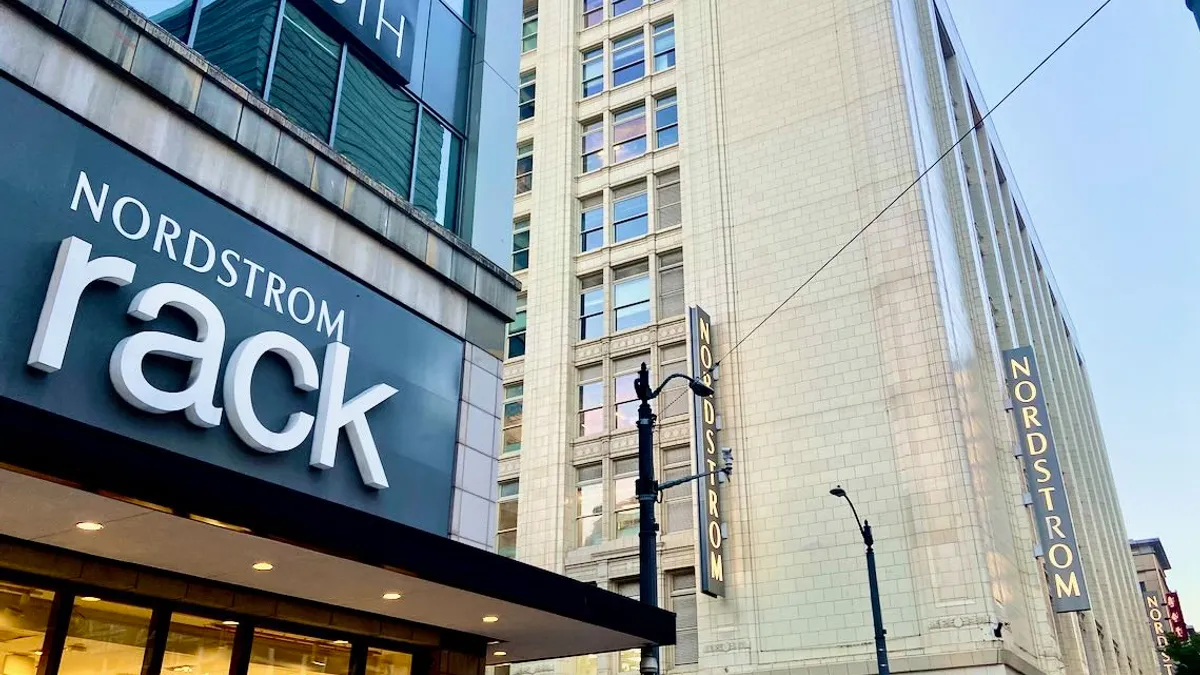This week, Nordstrom announced that in the fall it will open its 25th Rack store in Texas and its seventh in Georgia, the latest in the steady build-out of its off-price business in recent years. As of Feb. 1, the company runs 277 Rack locations — 19 more than the year before — and 92 full-line locations — down one from last year. CEO Erik Nordstrom has called Rack stores “a growth engine for our company,” the largest source of customer acquisition and important for long-term customer retention.
Other department stores are also pushing further into off price. Macy’s, which has been shuttering stores for years, over the weekend said it will add seven more Backstage off-price shop-in-shops this month, closing in on 300 stores with space dedicated to Backstage, plus five stand-alone Backstage stores. This year regional department store Belk will add to its outlet fleet, launched two years ago.
The department stores are hardly the only ones expanding in the space, however. In fact, the specialists are enlarging their already massive fleets even more rapidly. TJX, which runs TJ Maxx, Marshalls, HomeGoods and a slew of other off-price banners, opened 36 stores just in its most recent quarter, for a total of 3,700 in the U.S. alone. Burlington once again said its annual goal this year will be to open 100 net new stores; it opened 101 last year, topping 1,100 in all. Ross similarly is on pace to open 90 stores this year; it runs about 1,850 Ross stores and 360 DD’s Discounts stores.
The simultaneous rise of off price and decline of full-line department stores reflects a decade-long trend that continued apace in Q1, according to research this week from UBS analysts led by Jay Sole.
“Off-price retailers have been major share gainers over department stores, in terms of both sales and EBIT dollars, over the past 10+ years,” Sole said, adding they found that market share gains remained high in Q1.
As of then, on a rolling four-quarter basis, off-pricers’ share of sales expanded by 210 basis points year over year to 66.6%, a gain of 1,110 basis points over the past five years. And they had nearly 81% of the group's profit pool, up 445 basis points year over year and 810 basis points versus pre-pandemic levels, per UBS’ calculations.
Although other analysts have found that off-price retailers are more vulnerable to recently imposed and still fluctuating tariffs than previously thought, they also benefit from the ensuing uncertainty, unlike most retailers.
In Q1, off-price inventory rose 13% year over year, compared to 1% at department stores, per the UBS report. Yet Q2 sales for the off-price group are expected to rise 6%, while at the department stores they’re expected to fall 6%.
“Despite similar growth spreads, we believe off-price retailers’ gross margins will be more resilient than department stores as stronger sales should lead to better fixed cost leverage,” UBS analysts said. They also expect off pricers' sales and profits to grow much faster than department stores' because of their market share gains and inventory opportunities.
“We believe off-price retailers are well positioned to continue taking market share over time,” they said. “We think department stores remain challenged because of their weaker growth prospects.”















